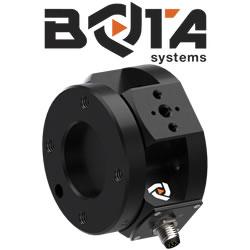Drone Delivery Canada to Expand Testing Program to The United States of America
The Company anticipates that the US Pilot Program will then run through the balance of the year. This new initiative expands DDCs testing program to include geographies within the United States utilizing its Sparrow X1000 drone which just recently achieved Compliant UAV Status with Transport Canada (December 2017).
TORONTO, Jan. 15, 2018 /PRNewswire/ - Drone Delivery Canada 'DDC or the Company' (TSX.V:FLT OTC:TAKOF) is pleased to announce that it's expanding its commercial testing program to the United States of America at the New York Griffiss International Airport UAS Test Site, located in Rome, New York in Q1, 2018.
The Company anticipates that the US Pilot Program will then run through the balance of the year. This new initiative expands DDCs testing program to include geographies within the United States utilizing its Sparrow X1000 drone which just recently achieved Compliant UAV Status with Transport Canada (December 2017). For testing, DDCs will utilize its own proprietary FLYTE management software that is designed to support semi-autonomous flight as well as BVLOS (beyond visual line of site) flights designed for commercial drone deliveries.
"We have very strong interest from multiple commercial customers in the USA that not only want to test our drone delivery platform in Canada, but also in their own Country as well. This pilot program will act as an extension of our primary Canadian initiatives and will expand our data collection ability. The FAA approved Rome, N.Y. site was made available to us by the progressive initiatives of the FAA and provides an ideal testing environment to achieve our customers' requests," commented Tony Di Benedetto, CEO. "While collectively working with our key Canadian stakeholders and the invaluable support of Transport Canada and the Canadian Federal Government which has allowed us to progress to this point, we now look to put Canada on the forefront of commercial drone delivery technology on a global stage with our first expansion occurring south of the border," added Di Benedetto.
The Griffiss International Airport unmanned aircraft systems (UAS) test site in Rome, N.Y., is a USA Department of Transportation's Federal Aviation Administration (FAA) approved facility designated to conduct research vital to integrating UAS into the national airspace system (NAS). The site is the fifth of six test sites that are operational in the U.S.
The US testing initiatives will complement DDC's extensive Canadian testing program scheduled for 2018, which will include testing its Beyond Visual Line of Sight (BVLOS) capabilities at the Transport Canada approved UAS Centre of Excellence located in Alma, Quebec.
For more information, please visit www.dronedeliverycanada.com
About Drone Delivery Canada
Drone Delivery Canada is a drone technology company focused on the design, development and implementation of its proprietary logistics software platform, using drones. The Company's platform will be used as Software as a Service (SaaS) for government and corporate organizations.
Drone Delivery Canada Corp. is a publicly listed company trading on the TSX V Exchange under the symbol FLT, on the U.S. OTC Q B market under the symbol TAKOF and on the Frankfurt exchange in Germany under the symbol A2AMGZ.
Featured Product

